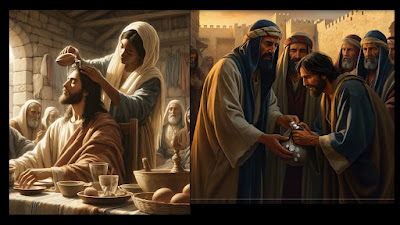In John 5:1–9, the story unfolds with Jesus encountering a paralyzed man by the Pool of Bethesda in Jerusalem. The pool was believed to have healing properties, and people would gather there hoping to be healed when the waters were stirred. The man had been paralyzed for 38 years.
Jesus visits the pool and sees the paralyzed man, who had been lying there for a long time. Jesus asks the man, "Do you want to be healed?"
Why did Jesus ask if the man wanted to be healed?
At first, it seems obvious that anyone by the pool, especially someone paralyzed for so long, would want to be healed. However, Jesus' question can be understood on multiple levels:
Personal Reflection
The question invites the man to reflect on his desires and whether he truly wants to be healed. Sometimes, long-term suffering can become part of a person's identity, and the change of being healed can be daunting. Jesus is encouraging the man to acknowledge his need and willingness to be made whole.
Faith and Readiness
By asking this question, Jesus is eliciting a response of faith or trust from the man. The man’s response indicates he is aware of his helplessness and his reliance on others. In a way, the question tests the man's openness to Jesus' intervention, rather than just relying on the pool's supposed healing powers.
Jesus' Compassion and Intent
Jesus’ approach is always personal and compassionate. He treats people as individuals with specific needs, not just as part of a crowd seeking healing. The question shows that Jesus is not assuming anything but is offering healing as a gracious, deliberate act.
In summary, Jesus' question emphasizes the importance of individual willingness and readiness to receive healing and salvation. While the man's physical need was apparent, Jesus' question touches on the deeper spiritual and emotional dimensions of healing.
For more, go to: Sabbath School Themes in the Gospel of John















.jpg)









